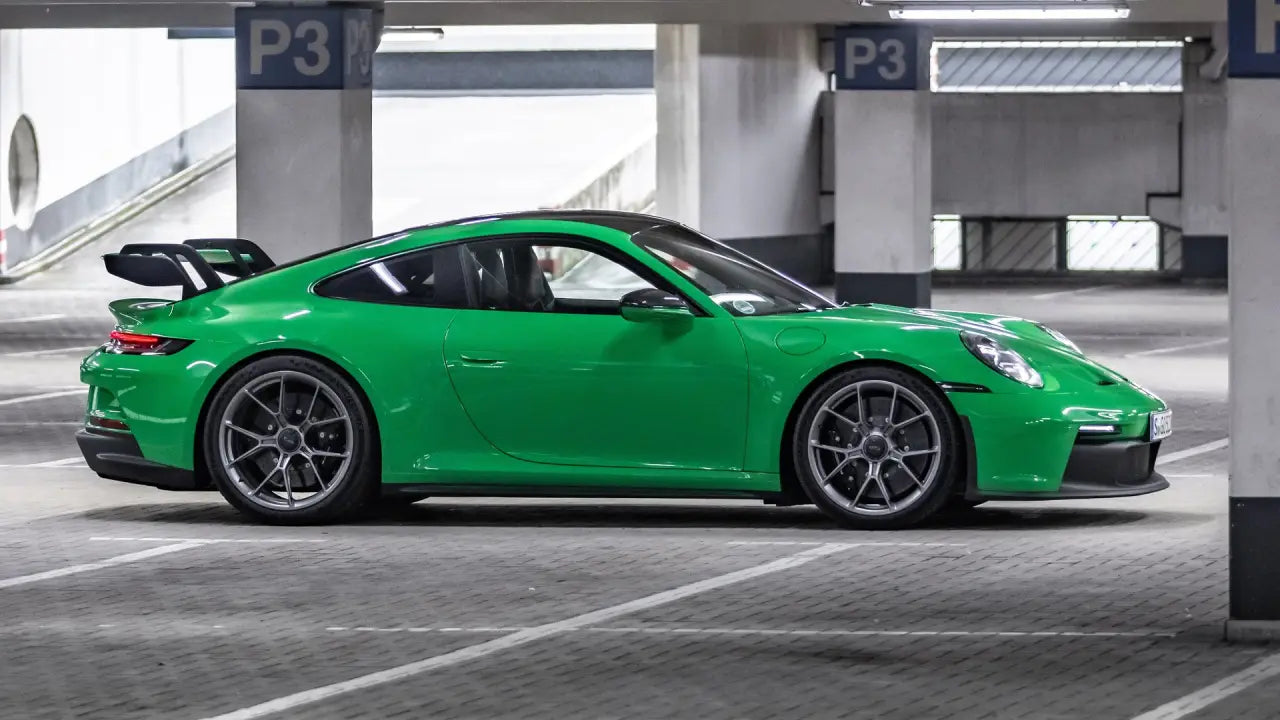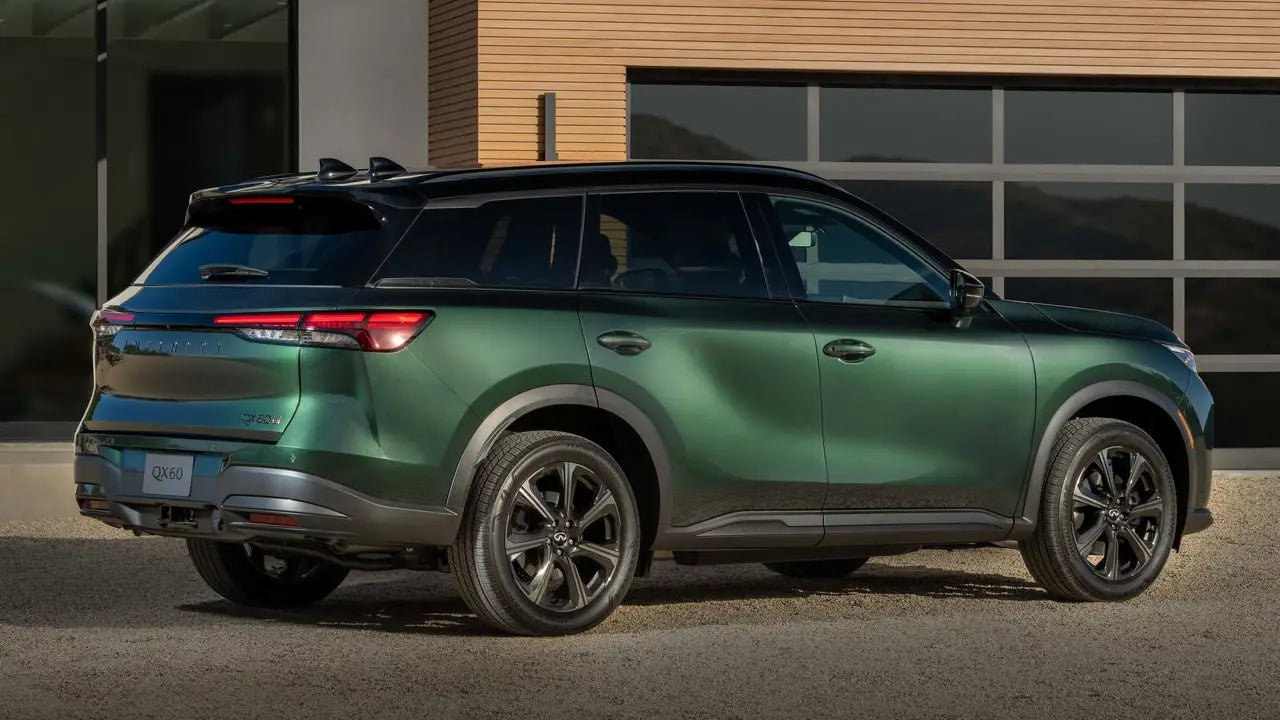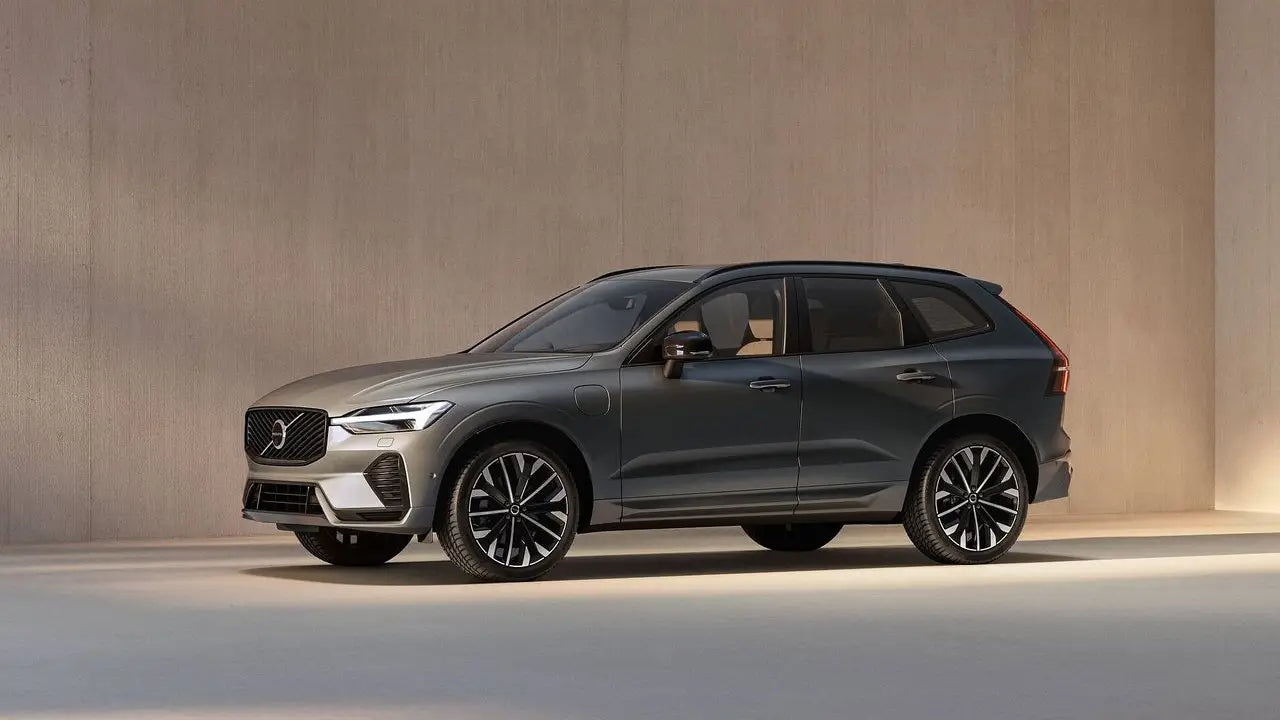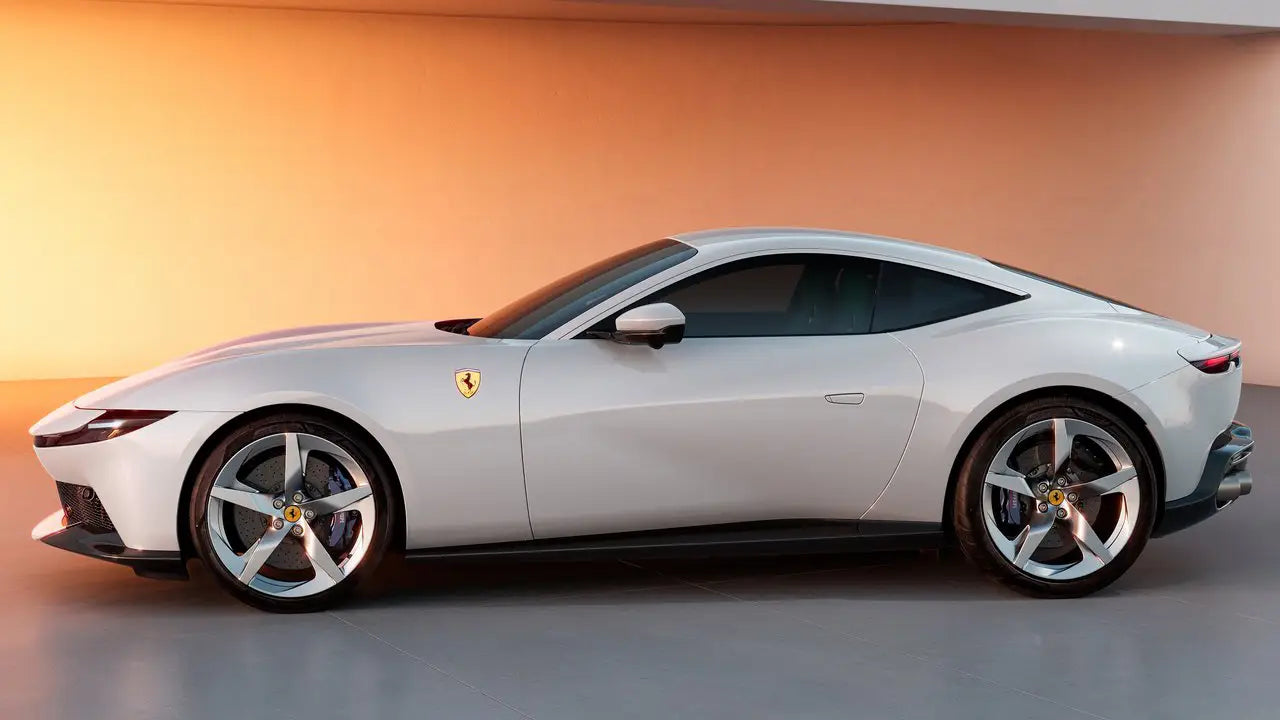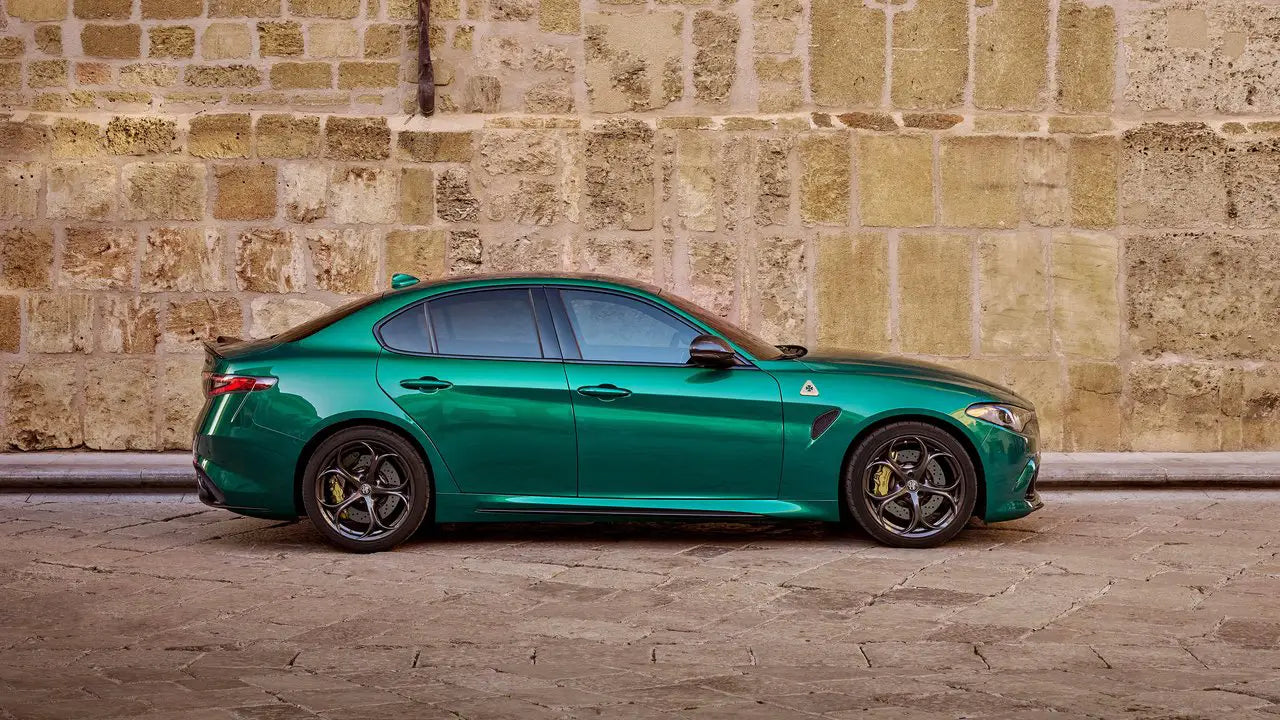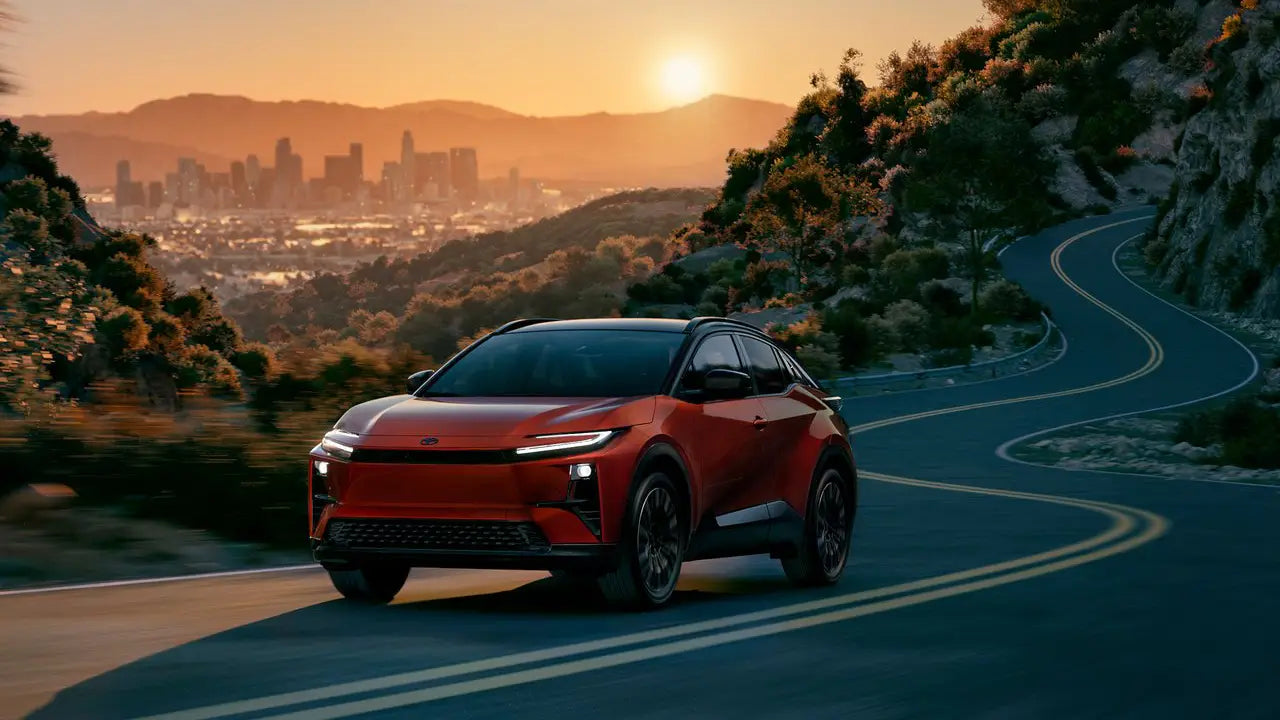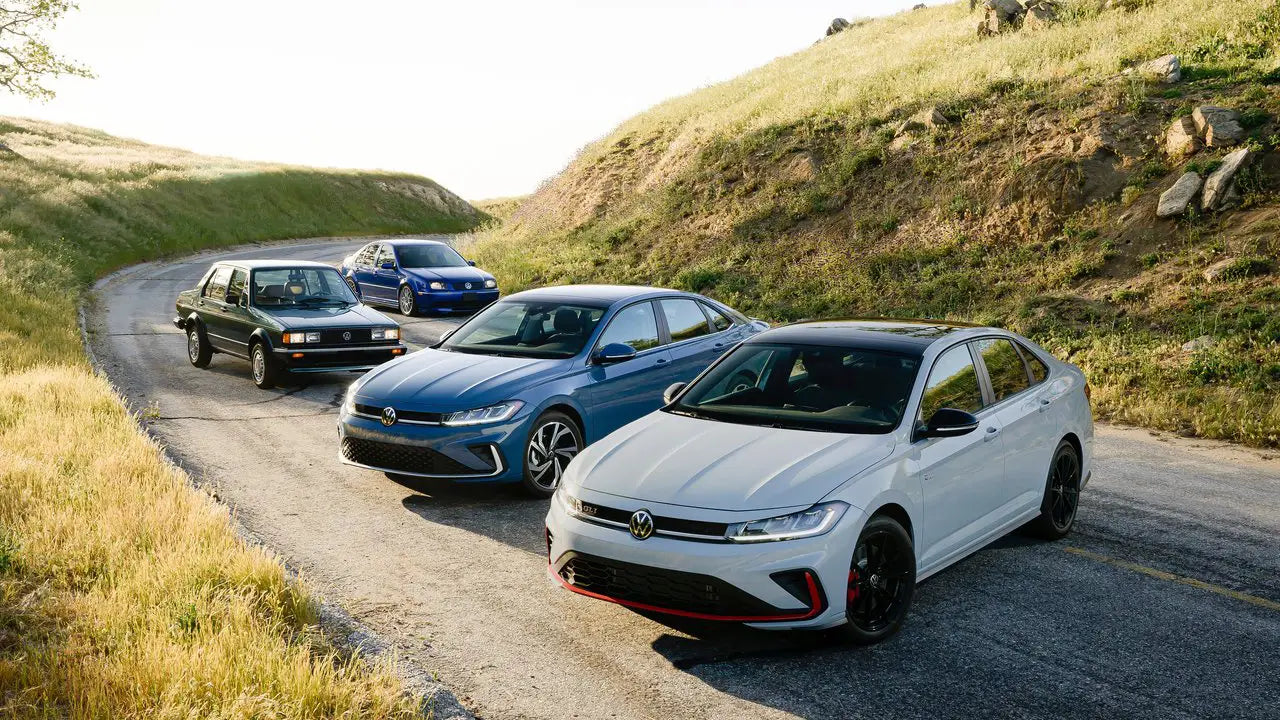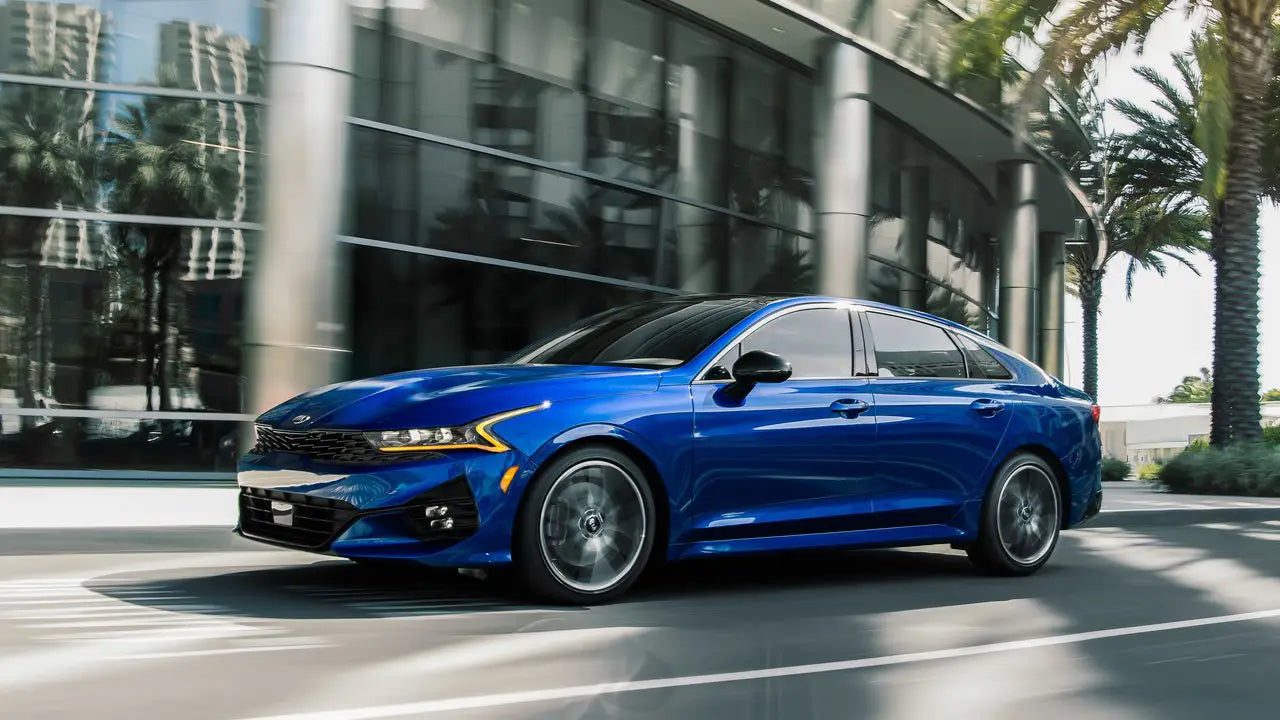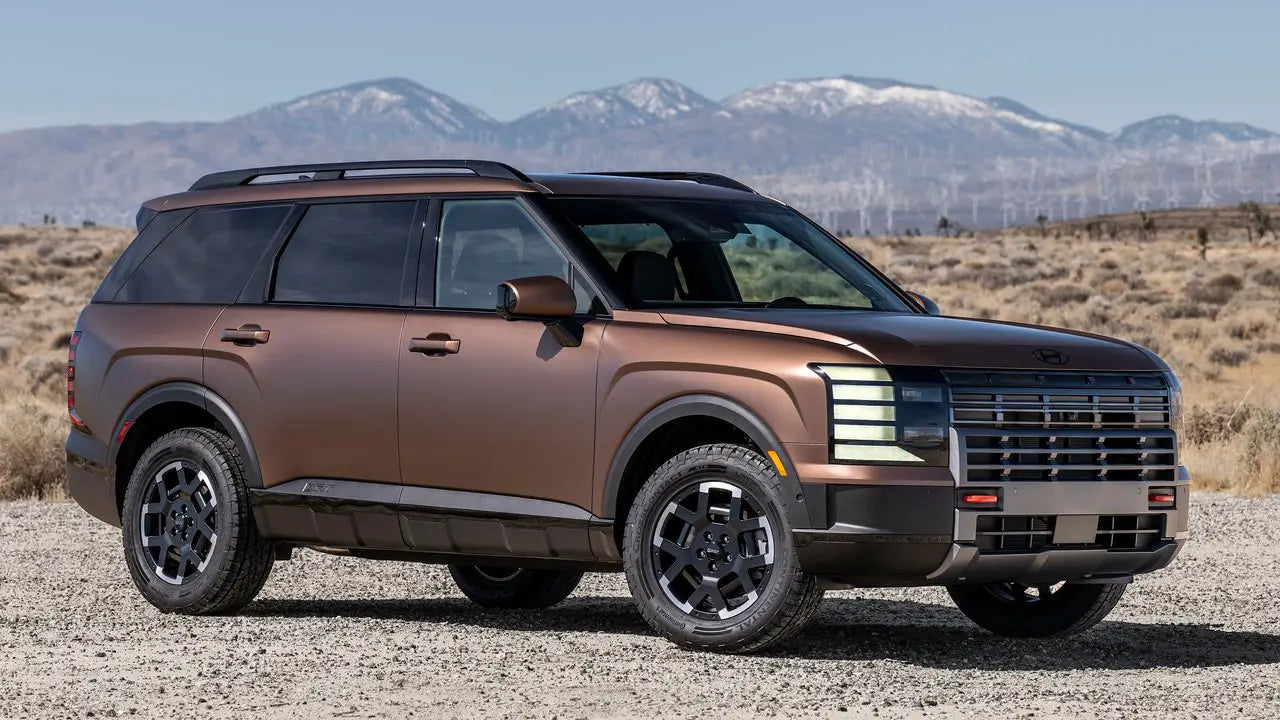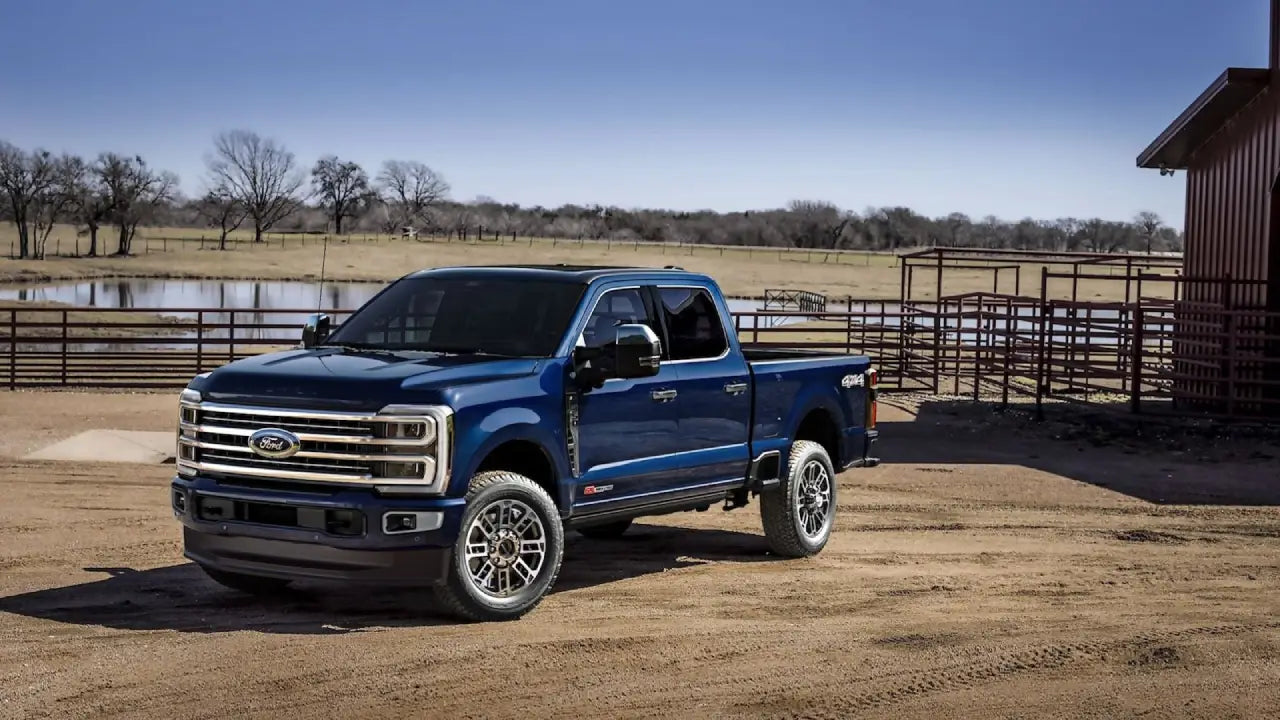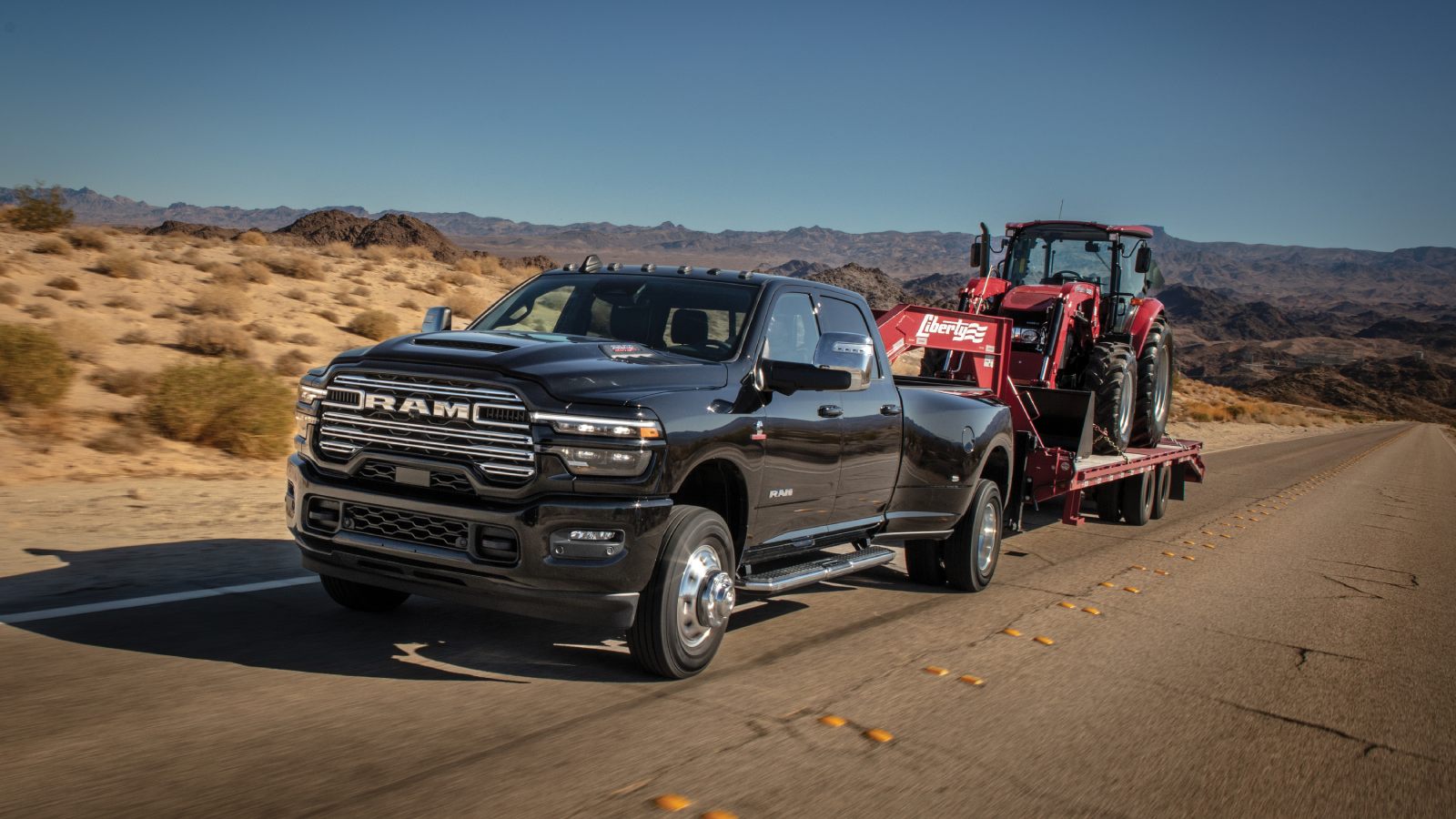Kaum ein Bauteil im Automobilbau ist optisch so auffällig und funktional so verwirrend wie der Spoiler. Autospoiler, die man üblicherweise mit Hochleistungssportwagen und Rennfahrzeugen in Verbindung bringt, sind weit mehr als nur ästhetische Verzierungen. Sie sind komplexe aerodynamische Vorrichtungen, die auf physikalischen und technischen Erkenntnissen basieren und speziell darauf ausgelegt sind, den Luftstrom zu manipulieren, die Stabilität zu erhöhen und die Fahrzeugleistung zu verbessern. Dieser Artikel befasst sich mit der Wissenschaft der Spoiler und ihrer entscheidenden Rolle in der Fahrzeugaerodynamik.
Aerodynamik verstehen: Die Grundlagen der Fahrzeugdynamik
Aerodynamik befasst sich mit der Bewegung der Luft um feste Objekte, meist Autos. Wenn sich ein Fahrzeug vorwärts bewegt, interagiert es mit der umgebenden Luft, wodurch verschiedene aerodynamische Kräfte entstehen. Dies sind die Hauptkräfte, die diese Interaktion ausmachen:
-
Luftwiderstand: Der Widerstand, dem ein Fahrzeug ausgesetzt ist, wenn es sich durch die Luft bewegt.
-
Aufzug: Eine Aufwärtskraft, die Traktion und Stabilität verringern kann.
-
Abtrieb: Das Gegenteil von Auftrieb; es drückt das Fahrzeug nach unten, um die Haftung zu erhöhen.
Bei effizientem aerodynamischem Design geht es darum, den Luftwiderstand zu verringern und den Abtrieb zu erhöhen, insbesondere bei hoher Geschwindigkeit. Autospoiler tragen maßgeblich dazu bei, die richtige Balance zu finden.
Was sind Autospoiler?
Autospoiler sind aerodynamische Vorrichtungen, die den Luftstrom um ein Auto steuern, um es stabiler zu machen, den Auftrieb zu verringern und die Bodenhaftung zu verbessern, insbesondere bei hoher Geschwindigkeit. Autospoiler sorgen für einen gleichmäßigen Luftstrom über und um das Auto, indem sie die Richtung oder Strömung der Luft verändern. Dadurch wird der Druck gesenkt, der das Auto instabil machen kann. Spoiler findet man üblicherweise an Sport- und Hochleistungsfahrzeugen, aber auch an Limousinen, Schräghecklimousinen und SUVs, um deren Aussehen zu verbessern, den Benzinverbrauch zu senken oder beides.

Welche Arten von Autospoilern gibt es?
Autospoiler gibt es in vielen verschiedenen Formen und Größen. Jeder Spoiler erfüllt je nach Platzierung, Fahrzeugtyp und Leistungszielen einen einzigartigen aerodynamischen Zweck:
Heckspoiler
Der am weitesten verbreitete Typ ist der Heckspoiler, der am Heck des Fahrzeugs, typischerweise am Kofferraumdeckel oder an der Heckklappe, montiert wird. Seine Hauptfunktion besteht darin, den durch den schnellen Luftstrom verursachten Auftrieb am Heck zu reduzieren. Heckspoiler verkleinern den Sog (Niederdruckzone) hinter dem Fahrzeug, indem sie turbulente Luft, die sich vom Heck des Fahrzeugs ablöst, unterbrechen und umleiten. Dadurch wird der Luftwiderstand verringert und die Traktion der Hinterräder verbessert. Dies verbessert die Stabilität bei hohen Geschwindigkeiten, das Bremsen und das Kurvenverhalten. Renn- und Hochleistungs-Straßenfahrzeuge benötigen Heckspoiler, die heute bei Limousinen und Fließhecklimousinen zur Verbesserung der Aerodynamik serienmäßig sind.

Frontspoiler (Luftdämme)
Frontspoiler, auch Luftdämme genannt, werden am unteren Teil der vorderen Stoßstange eines Fahrzeugs montiert. Sie reduzieren den Luftstrom unter dem Fahrzeug, der Auftrieb und Turbulenzen verursachen kann. Frontspoiler reduzieren den Auftrieb an der Frontpartie, indem sie den Luftstrom auf die Rutschen und um die Karosserie herum lenken, anstatt darunter hindurch. Erhöhter Abtrieb verbessert Lenkpräzision, Bremskontrolle und die Haftung der Vorderreifen.
Lippenspoiler
Lippenspoiler bieten eine dezentere Alternative zu herkömmlichen Heckspoilern, die typischerweise an der Kante des Kofferraumdeckels oder der Heckstoßstange befestigt werden. Sie ragen nur wenig in den Luftstrom hinein und bieten nur geringe aerodynamische Vorteile. Obwohl sie keinen nennenswerten Abtrieb erzeugen, minimieren Lippenspoiler effizient den Auftrieb und verbessern den Luftstrom, ohne das Fahrzeugdesign drastisch zu verändern. Ihr schlichter Stil macht sie zu einer beliebten Wahl für Fahrzeuge, die sportlich und gleichzeitig edel aussehen sollen, insbesondere Coupés und Limousinen.

Dachspoiler
Dachspoiler werden üblicherweise über der Heckscheibe am oberen hinteren Rand des Daches angebracht. Schräghecklimousinen, SUVs und Crossover sind alle mit solchen Spoilern ausgestattet. Ihre Hauptfunktion besteht darin, den Luftstrom über Dach und Heckscheibe zu verändern. Dies erhöht den Abtrieb an der Hinterachse und reduziert Turbulenzen im Heck. Einige Modelle verwenden Dachspoiler, um die Heckscheibe sauberer zu halten, indem sie die Bewegung von Staub und Wasser über das Heck des Fahrzeugs regulieren.

Aktive Spoiler
Aktive Spoiler sind innovative aerodynamische Systeme, die ihre Position, ihren Winkel oder ihre Ausfahrlänge automatisch an Fahrsituationen wie Geschwindigkeit, Bremskraft und Lenkwinkel anpassen. Diese Systeme kommen häufig in Hochleistungs- und Premium-Sportwagen zum Einsatz. Bei niedrigeren Geschwindigkeiten werden aktive Spoiler eingefahren, um den Luftwiderstand zu verringern und die Optik zu erhalten. Bei schneller Beschleunigung oder Verzögerung des Fahrzeugs fährt der Spoiler aus oder ändert seinen Winkel, um den Abtrieb zu erhöhen oder den Auftrieb zu minimieren und so Grip und Stabilität zu verbessern.

Welche Materialien werden für Autospoiler verwendet?
Autospoiler werden je nach Zweck, Leistung und Kosten aus unterschiedlichen Materialien hergestellt. Viele Aftermarket-Anwendungen verwenden Fiberglas, das leicht, günstig und gut formbar, aber spröde ist. ABS-Kunststoff wird häufig für werkseitig installierte Spoiler verwendet, da er flexibel, schlagfest und erschwinglich ist, allerdings eine geringere strukturelle Festigkeit aufweist. Kohlefaser ist aufgrund ihres hervorragenden Festigkeits-Gewichts-Verhältnisses und ihrer eleganten Optik die erste Wahl für Hochleistungs- und Rennwagen, hat aber auch einen höheren Preis. Aluminium ist etwas schwerer als Kohlefaser, aber langlebig, rostbeständig und perfekt für verstellbare Rennspoiler, bei denen Präzision und Festigkeit gefragt sind.
Was sind die Vorteile von Autospoilern?
Autospoiler bieten zahlreiche funktionale und leistungsbezogene Vorteile, indem sie die Interaktion eines Fahrzeugs mit der umgebenden Luft verbessern. Obwohl sie oft mit sportlicher Ästhetik in Verbindung gebracht werden, liegt ihre Hauptfunktion in der aerodynamischen Effizienz, der Fahrzeugstabilität und der Fahrsicherheit. Werfen wir einen Blick auf die wichtigsten Vorteile:

-
Verbesserte Stabilität bei hohen Geschwindigkeiten: Erhöht den Abtrieb, um das Fahrzeug fest auf der Straße zu halten.
-
Verbesserte Traktion und Haftung: Sorgt für Kontakt der Reifen mit der Straße beim Beschleunigen, Bremsen und in Kurven.
-
Reduzierter Luftwiderstand: Optimiert den Luftstrom, um den Widerstand zu minimieren und die Gesamteffizienz zu verbessern.
-
Bessere Bremsleistung: Verbessert die Balance und Bremskraft durch Beibehaltung einer konstanten Reifenhaftung.
-
Ausgewogenes Handling: Arbeitet mit anderen aerodynamischen Komponenten zusammen, um eine gleichmäßige Stabilität von vorne nach hinten zu gewährleisten.
-
Mögliche Verbesserungen der Kraftstoffeffizienz: Verringert den Luftwiderstand, insbesondere bei hohen Geschwindigkeiten, wodurch der Kraftstoffverbrauch gesenkt wird.
-
Reiniger Heckscheibe: Dachspoiler verändern den Luftstrom, sodass sich Schmutz und Wasser nicht auf der Heckscheibe ablagern.
-
Sportlicheres Aussehen: Verleiht dem Auto ein aktiveres und aggressiveres Aussehen.
Wie Sie sehen, sind Autospoiler weit mehr als nur stilistische Ergänzungen; es handelt sich um sorgfältig konstruierte Komponenten, die die Aerodynamik, das Handling und die Effizienz eines Fahrzeugs verbessern.
Häufige Missverständnisse über Autospoiler
Autospoiler werden im Automobildesign oft missverstanden. Obwohl sie häufig mit sportlicher Ästhetik und Hochleistungsautos in Verbindung gebracht werden, haben viele Fahrer und Enthusiasten falsche Vorstellungen über die wahre Funktion von Spoilern. Nachfolgend finden Sie häufige Missverständnisse über Autospoiler sowie Erläuterungen, die Wahrheit von Mythos unterscheiden:
Spoiler machen Ihr Auto schneller
Dies ist vielleicht der am weitesten verbreitete Irrtum. Spoiler erhöhen nicht direkt die Höchstgeschwindigkeit oder die PS-Zahl eines Autos. Stattdessen regulieren sie den Luftstrom, um das Fahrzeug stabiler zu machen, den Auftrieb zu verringern und die Bodenhaftung zu verbessern. Mit Spoilern fällt es Fahrern leichter, höhere Geschwindigkeiten zu halten, insbesondere in Kurven oder bei hoher Geradeausfahrt. Sie sorgen jedoch weder für mehr Motorleistung noch für eine höhere Beschleunigung des Autos.
Alle Spoiler verbessern die Leistung
Nicht alle Autospoiler verbessern die Leistung. Viele Spoiler, insbesondere solche an Massenfahrzeugen oder in Nachrüstsätzen, dienen in erster Linie ästhetischen Zwecken. Sie sind möglicherweise nicht im Windkanal getestet oder weisen keine aerodynamische Funktionalität auf und können den Luftstrom beeinträchtigen, was zu erhöhtem Luftwiderstand oder verringerter Kraftstoffeffizienz führt. Nur präzise konstruierte Spoiler – typischerweise im Motorsport oder bei leistungsorientierten Modellen zu finden – bieten messbare Verbesserungen bei Abtrieb, Stabilität oder reduziertem Auftrieb.
Spoiler sind nur für Sportwagen
Obwohl Spoiler eng mit Hochleistungsfahrzeugen verbunden sind, werden sie zunehmend auch bei Nicht-Sportwagen eingesetzt. Viele moderne Limousinen, Schräghecklimousinen, SUVs und Elektroautos sind mit Spoilern ausgestattet. In diesen Fällen kann der Spoiler nicht nur die Leistung verbessern, sondern auch den Kraftstoffverbrauch oder die Luftzirkulation senken.
Größere Spoiler funktionieren besser
Die Größe eines Spoilers bestimmt nicht automatisch seine Wirksamkeit. Ein großer, aggressiver Spoiler kann, wenn er nicht zum aerodynamischen Profil des Fahrzeugs passt, einen hohen Luftwiderstand erzeugen. Die Wirksamkeit eines Spoilers hängt von Platzierung, Anstellwinkel, Luftgeschwindigkeit und Fahrzeugform ab. Ein kleiner, gut designter Spoiler kann einen größeren, schlecht abgestimmten oder dekorativen Spoiler übertreffen.
Front- und Heckspoiler erfüllen denselben Zweck
Sowohl Front- als auch Heckspoiler sind aerodynamische Elemente, die das Fahrverhalten eines Fahrzeugs jedoch auf unterschiedliche Weise verbessern. Luftleitbleche oder Splitter, auch Frontspoiler genannt, befinden sich tief an der vorderen Stoßstange und verhindern ein Abheben der Frontpartie, indem sie den Luftstrom unter dem Fahrzeug blockieren. Heckspoiler hingegen verringern den Auftrieb am Heck des Fahrzeugs und verbessern die Stabilität bei höheren Geschwindigkeiten, indem sie den Luftstrom beim Austritt aus dem Fahrzeug lenken.
Spoiler verbessern automatisch die Kraftstoffeffizienz
Zwar sind manche Spoiler darauf ausgelegt, den Luftwiderstand zu verringern und die aerodynamische Effizienz eines Fahrzeugs zu verbessern, doch dies ist nicht immer der Fall. Viele Spoiler, insbesondere solche, die den Abtrieb erhöhen, erhöhen den Luftwiderstand im Gegenzug für besseren Grip und Stabilität. Kraftstoffeinsparungen sind nur möglich, wenn der Spoiler speziell darauf ausgelegt ist, Turbulenzen zu minimieren und den Luftstrom zu optimieren.




